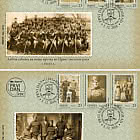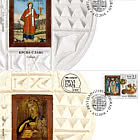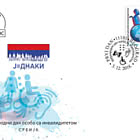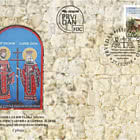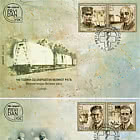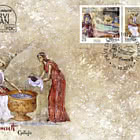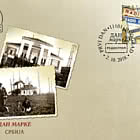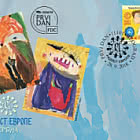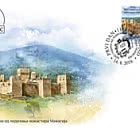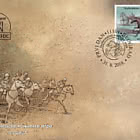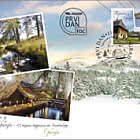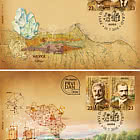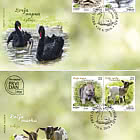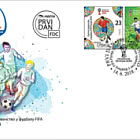2018Jewish Sacral Architecture in Serbia - First Day Cover
2018 Jewish Sacral Architecture in Serbia - First Day Cover for only GBP £0.74
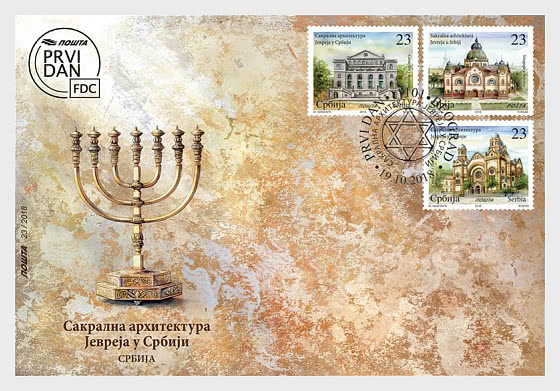
- 19.10.2018
The term synagogue is of Greek origin and it indicates a Jewish municipality, i.e. the place of gathering of the Jewish community members. In Hebrew, the term which indicates a synagogue is beit knesset, and the term bet ha tefillah (the house of prayer) is also used. For the construction of synagogue as a religious object, there are no special constructional, architectural or aesthetic requirements and rules – it can be any house owned by local Jewish community.
The foundation stone of the synagogue of the Ashkenazi rite in Belgrade, Sukkat Shalom, designed by architect Milan Šlang, at 19 Maršala Birjuzova Street, was laid by king Alexander Karađorđević, and the building was built in 1925. It was consecrated after the liberation in 1944 and it has been used regularly as a synagogue to this day.
The synagogue of the Ashkenazi rite in Novi Sad, at 11 Jevrejska Street, was built in 1906 as the fifth synagogue in Novi Sad, at the same location as the previous four. It is the work of the Budapest architect Lipót Baumhorn. It was consecrated upon the liberation and it was used until 1975, and in 1991 after the restoration, it became the representative concert hall.
Subotica Synagogue was built in 1902 according to the project of Budapest architects Marcell Komor and Dezso Jakab. A harmonious monumental building of Secession style, enriched with constructive innovations – the central dome, 40m tall, rests on a steel construction of eight steel pillars. Three entrance portals lead to the narthex, above which is the space for women, and four stairs lead to the gallery. There are 850 seats on the ground floor and 550 in the gallery.
Subotica Synagogue was declared a Monument of Culture of Exceptional Importance in 1991. Conservation and restauration activities were carried out from 1980 – 1993. Since 2003, the extensive works at the synagogue completely restored the external appearance from 1902, and the works were entirely completed in 2018.
Subotica Synagogue, which is now governed by the City of Subotica, the Jewish Community and the National Council of the Hungarian Ethnic Minority, is visited by 10,000 tourists a year.
Expert collaboration: Vojislava Radovanović, Museum counsellor and director, the Jewish Historical Museum in Belgrade.
Artistic realization of the stamps: Miroslav Nikolić.
WOPA+ recommended stamp issues
| Music Giants VII - Iron Maiden |
| Issued: 12.01.2023 |
| ›Great Britain |
| Effigy of H.S.H Prince Albert II - Green Letter Rate |
| Issued: 03.01.2023 |
| ›Monaco |
| Year of the Rabbit |
| Issued: 05.01.2023 |
| ›Guernsey |
| Dimitrie Cantemir, 350th Anniversary of his Birth |
| Issued: 16.01.2023 |
| ›Romania |
| Medicinal Plants |
| Issued: 03.01.2023 |
| ›Romania |
| Honour Guard of the President of the Slovak Republic |
| Issued: 02.01.2023 |
| ›Slovakia |
| Veteran Tractors |
| Issued: 04.01.2023 |
| ›Aland Islands |
| St. Elizabeth’s Church in Parnu |
| Issued: 06.01.2023 |
| ›Estonia |













